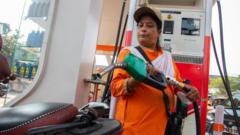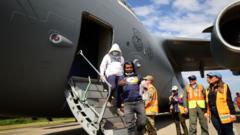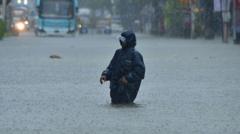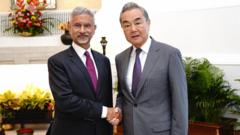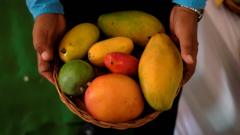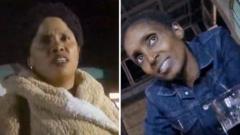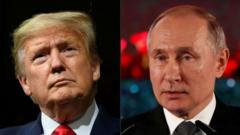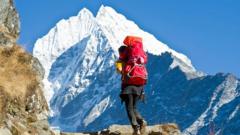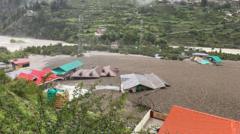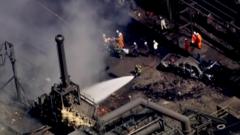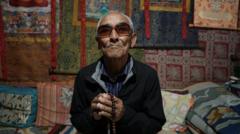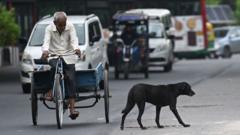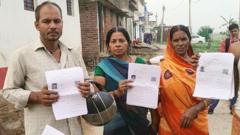The annual air pollution crisis in Delhi exposes the government's inability to effectively respond and protect its citizens.
Delhi Faces Severe Air Quality Crisis Amidst Government Inaction

Delhi Faces Severe Air Quality Crisis Amidst Government Inaction
As pollution levels soar, the health and livelihoods of Delhi's residents hang in the balance.
On a recent Tuesday morning, the air quality index in New Delhi recorded a staggering level of 485—nearly five times the safe limit for healthy breathing. Despite this alarming figure, it was perceived as a slight improvement when compared to the previous day’s shocking 1,785 reading. While some sunlight finally broke through the thick smog, residents continued to endure the detrimental effects of hazardous air.
Vikram Singh, a 58-year-old auto-rickshaw driver, expressed his struggle with the pollution: “My eyes have a burning feeling during these periods of pollution,” he shared, adding that he feels more fatigued and is now earning less than usual, decreasing his income from $8.30 to merely $6 per day. This annual crisis typically coincides with the transition to winter, as cooler temperatures exacerbate pollution levels across northern India.
In response to the dire situation, political leaders have implemented emergency measures, yet tangible improvements remain elusive. Delhi's Chief Minister, Atishi, referred to the pollution as a "medical emergency" that threatens vulnerable populations like children and the elderly. Amidst widespread discontent, the Supreme Court criticized national officials for their slow response, mandating urgent actions that include halting construction and restricting vehicle access in certain areas. Schools were also shut down indefinitely as a precaution for students' safety.
While the privileged classes in Delhi can somewhat adapt to the crisis with work-from-home setups and protective gear reminiscent of the COVID-19 pandemic, many residents like Debu Jyoti Dey, a finance director in the nonprofit sector, face difficult choices. Dey was seen wearing a handkerchief as makeshift protection while commuting. “At least I was going indoors,” he remarked, highlighting the struggles of those who cannot afford proper masks or safe living conditions.
As the pollution crisis continues to unfold, the government’s ongoing inadequacies leave many residents feeling helpless and unprotected, overshadowing the rich and diverse culture of a city striving to be world-class amidst a public health emergency.
Vikram Singh, a 58-year-old auto-rickshaw driver, expressed his struggle with the pollution: “My eyes have a burning feeling during these periods of pollution,” he shared, adding that he feels more fatigued and is now earning less than usual, decreasing his income from $8.30 to merely $6 per day. This annual crisis typically coincides with the transition to winter, as cooler temperatures exacerbate pollution levels across northern India.
In response to the dire situation, political leaders have implemented emergency measures, yet tangible improvements remain elusive. Delhi's Chief Minister, Atishi, referred to the pollution as a "medical emergency" that threatens vulnerable populations like children and the elderly. Amidst widespread discontent, the Supreme Court criticized national officials for their slow response, mandating urgent actions that include halting construction and restricting vehicle access in certain areas. Schools were also shut down indefinitely as a precaution for students' safety.
While the privileged classes in Delhi can somewhat adapt to the crisis with work-from-home setups and protective gear reminiscent of the COVID-19 pandemic, many residents like Debu Jyoti Dey, a finance director in the nonprofit sector, face difficult choices. Dey was seen wearing a handkerchief as makeshift protection while commuting. “At least I was going indoors,” he remarked, highlighting the struggles of those who cannot afford proper masks or safe living conditions.
As the pollution crisis continues to unfold, the government’s ongoing inadequacies leave many residents feeling helpless and unprotected, overshadowing the rich and diverse culture of a city striving to be world-class amidst a public health emergency.


